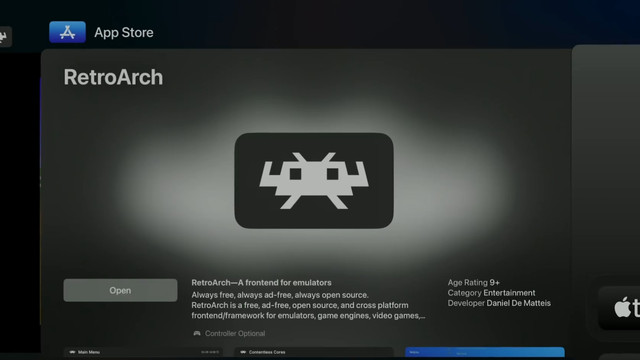Star Trek and the 4X genre seem like a match so perfect it’s a fantasy you’d just have to create on a Holodeck. A grand universe to explore, tons of interesting species and factions to meet, and some very cool spaceships; what’s not to like? With so much promise, Star Trek: Infinite could have been – should have been – a slam dunk. But while I really wanted to like Star Trek: Infinite, it didn’t seem to like me back. It has some neat and unique ideas, but after dealing with more than a few off design choices and seeing several playthroughs blown up dozens of hours in by bugs that prevented me from performing major actions, I’m happy to explore strange new worlds elsewhere.
It’s quicker to list the few things Infinite does right than wrong, so let’s start there. This space-based grand strategy game is clearly heavily inspired by the excellent Stellaris, but developer Nimble Giant Entertainment has done a good job of making things just different enough to distinguish itself. You’ll start by picking one of four factions: the Federation, the Klingon Empire, the Romulan Empire, or the Cardassian Union. This choice isn’t just for flavor, either, as each faction plays dramatically differently, with unique units, mechanics, and different ways to expand its empire.
The Federation is best at exploring, diplomacy, and researching new technology. The Cardassians excel at spycraft, warfare, and conquering and enslaving other species. The Klingons’ penchant for tradition and honorable combat make them the ones you’ll want to use if you’re looking to conquer the rest of known space through coups. And the versatile Romulans, while great at stealth and guile, can either assimilate like the Federation or conquer like the Klingons or Cardassians. It’s good stuff; every faction feels distinct while still making it clear they’re playing the same game.
And… that’s about it as far as your options go. Infinite has a ton of Minor Powers like the Betazoid Houses or the Ktarian Enclave, but they’re only there for you to assimilate, conquer, enslave, trade with, and so on. They exist only to give the Major Powers something to do, which is a shame because it makes them feel more like resources to utilize rather than actual factions. It would be cool to take control of a Minor Power like the Bejorans and break away from Cardassian rule or try your luck as the Trill Assembly. Unfortunately, there’s just no option to.
The tutorial starts you off as the Federation, which is probably a good decision because they’re the most interesting faction, though the actual guidance you get is pretty barebones. It walks you through the basics, but you’ll probably need to watch several hours of YouTube tutorials before you actually understand what you’re doing if you’re not already familiar with 4X games – but once you’re in, Infinite has some nice touches that really nail the Trek feel.
You always start each new campaign in the same place at the same time: the year 2346, or about twenty years before the beginning of Star Trek: The Next Generation. It’s a deliberate and smart choice, as all of the Major Powers are neighbors at more or less the same strength, and a lot of the most important events in Star Trek are right around the corner. The incident that kicks everything off is the Khitomer Massacre, a Romulan attack on a Klingon colony, and fans of the shows will enjoy seeing other canon events occur as time goes on. Encounters with certain strange space cubes, for example, or an exploding Romulan sun.
This setup does a great job of capturing the Star Trek universe, and on replays, you have the added benefit of having a good idea of where some of the Minor Powers are (though that does change somewhat from run to run). The downside is that it takes a bit for each new playthrough to actually feel “new,” which puts a little bit of a damper on the initial replayability.
Once you get going, though, things are like any other grand strategy game – in other words, you’ll manage a lot of spreadsheets. Don’t get me wrong, there’s plenty of strategy in this grand strategy game. You’ll colonize planets, construct fleets, mine and manage resources, build your relationships with other powers, recruit leaders, research technology, and boldly go where no one has gone before, but you do all of it by clicking through menus. As in most grand strategy games, however, the appeal is in the larger choices you make to guide your faction, not necessarily the moment-to-moment unit management. StarCraft this ain’t. With so much to keep track of, it’s easy to get overwhelmed, but thankfully you can pause and take your time to think out each move, and all of these systems combine for a compelling, unique take on the 4X formula.
The combat in Infinite doesn’t have the same depth to make it as engaging. Usually, the only thing you have to do to win a battle is build a larger force than your opponent and throw it at them until they surrender. To be fair, and despite what the J.J. Abrams reboot trilogy might try to tell you, Star Trek isn’t really about ships shooting at each other with phasers and photon torpedoes – but it is kind of a bummer that there’s not more variety to break up all the menu management.
One of the best additions to the genre, however, is the Mission Tree – a series of branching events you can complete to take your civilization down different paths. For example, gather enough alloy as the Federation and you can build the Enterprise; if you’re playing the Romulans and on good terms with the Federation, they might help you when your sun starts dying, which opens a different path on the tree. The tree also offers some alternate “non-canonical” paths: wanna take the Federation down to the dark side and conquer the other powers? You can, and the Mission Tree will reward you for doing so.
Unfortunately, the Federation’s tree is the only one with any interesting choices. Most of the Mission Trees for the other factions allow you to choose between reforming the worst parts of their culture or being slaveholders and warmongers who’d set a box of kittens on fire with a flamethrower, light cigars off of their smoking corpses, and then read their lines with a level of menace reserved for Benedict Cumberbatch’s Khan in Star Trek: Into Darkness. It’s a very binary “Are you a good witch or a bad witch?” kind of progression, but it does add a nice narrative flow to each run and constantly gives you something to shoot for while rewarding you for playing your faction a certain way.
Now, I know what you’re thinking: “But Will, this sounds alright! What was with that negative opening paragraph? I was expecting things to be way worse!” Well, dear reader, that’s because we haven’t talked about the bugs yet. Star Trek: Infinite was buggy when I previewed it back in September, but it was one of those things I chalked up to playing a pre-release build. Surely it would get better by launch, right? Wrong. It got worse. I’m not often one to hang my hat on whether or not a game is buggy, but Infinite is one of the buggiest games I have ever played, to the point where entire systems simply did not work in the review build.
Some of these bugs are minor. For instance, occasionally the in-game notifications would tell me one of my leaders had died, so I’d frantically tab through them, wondering what had happened. Had I sent a science vessel to explore a hostile area? Were they claimed by old age? An accident? Nope. Infinite just played the wrong voice line for an entirely unrelated notification like some sort of cruel prank. Annoyances like this happen all the time.
Occasionally whole mechanics will bug out as well, like when you initiate First Contact with an alien race. You’re essentially racing to see if you can make contact with them before they can make contact with you, and if they beat you to it, you simply don’t get as many rewards from the post-race resolution. This is supposed to end the First Contact section of your relationship with that race and let you interact with them normally from then on, but sometimes they’ll beat you to it, you’ll resolve that outcome, and then Infinite will act like you actually won the race and force you to resolve that outcome, too.
I could live with these smaller issues if they were the only things wrong with Infinite. Unfortunately, they aren’t. No, the real, glaring problem I consistently encountered is that the process for integrating new cultures into your empire always ceases to function after a certain point in a given run, often leaving my progress severely hindered when I was already a dozen or more hours deep.
I’ve played most of my Infinite runs as a pacifist, peacefully befriending and integrating other cultures into my civilization of choice, and only using combat as a last resort. But after a while, when I start the process with one of my Envoys, nothing happens. When I previewed Infinite, there was a little bar that would fill up and tell me how fast it was happening. Now? My Envoy just stays there forever. That means I’m not only locked out of expanding my empire the way I want to, I also can’t complete certain missions on the Mission Tree. After hours and hours, that save file essentially becomes useless. And this happens every time. No amount of starting a new run, verifying my files, uninstalling and reinstalling, or anything else has made a difference.
Similarly, the notifications you get can sometimes be disastrously wrong rather than just annoyingly so. Once, I found myself drawn into a war with the Klingons because they attacked my ally. Every pop-up and every in-game bar was telling me we were winning, but shortly thereafter, my ally surrendered. Another time, the Federation was having an election. I put my weight behind my current leader, but despite having far more popularity than any other candidate (I checked), he lost. I’m also fairly sure I’m not supposed to be able see the Casus Belli (the reasons each faction has for going to war with another faction, or any claims they hold on other factions) that absolutely every faction can use on every other faction next to each Major and Minor Power’s name when I open the Contact page, especially when no one has used any of them to make a claim. Even if I am supposed to be able to, it’s a little weird when the civilizations in question are openly hostile to me and I have no other information on them.
The list goes on. Sometimes tooltips have placeholder text. At a certain point I stopped being able to even open the ship designs menu, which allows you to take a ship class blueprint and slap on all the upgrades you get from the research your scientists have done. It’s fun to be able to tailor your ships to your playstyle, and it means your older ships are still useful later on… or at least it was until I inexplicably lost access to it anymore. When I reinforce my fleets, new ships get added to their own fleet instead of to the fleet they’re supposed to be reinforcing. All these issues together become maddening. There’s a good grand strategy game in here somewhere, but right now, I can barely play it.









